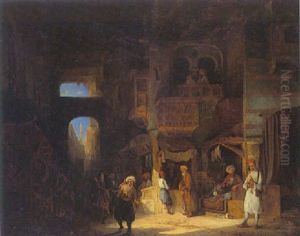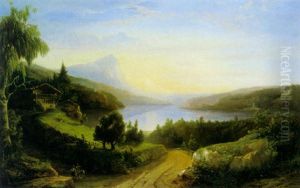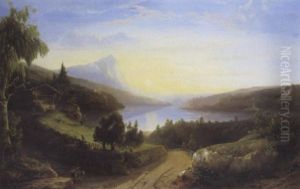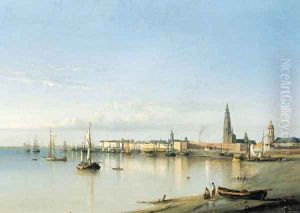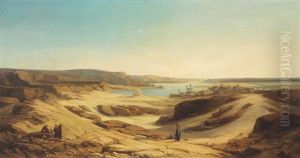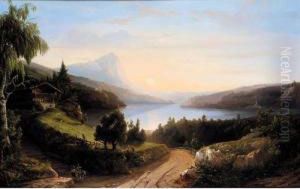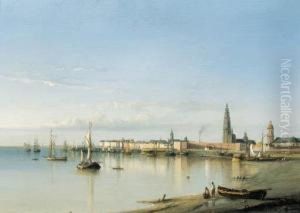Florent Mols Paintings
Florent Joseph Marie Mols, born in 1811 in Antwerp, Belgium, was a distinguished 19th-century painter known for his landscape and genre paintings. He was part of the Romantic movement, which emphasized emotion and individualism as well as glorification of the past and nature. Mols' early education and influences came from the vibrant artistic environment of Antwerp, a city renowned for its historical significance in the arts, particularly for its role in the development of Flemish painting.
Mols' artistic journey was marked by his meticulous attention to detail and his ability to capture the essence of nature and human experiences. His genre paintings often depicted scenes from daily life, showcasing his keen observation and deep appreciation for the simplicity and beauty of the mundane. These works resonated with the Romantic movement's ideals, as they highlighted the emotional depth and universal significance found in everyday moments.
Throughout his career, Florent Mols exhibited his works in various prestigious venues, gaining recognition and acclaim for his contribution to Belgian art. Despite the prominence of the Romantic movement during his early years, Mols managed to forge his unique style, blending romanticism with a hint of realism, a testament to his versatility and skill as an artist.
Mols' landscapes are particularly notable for their atmospheric quality and the sense of tranquility they evoke. His use of light and shadow, combined with meticulous brushwork, resulted in captivating scenes that invited viewers to pause and reflect. These works not only exemplify Mols' technical prowess but also his philosophical contemplation of nature and its relation to human emotion.
Florent Mols passed away in 1896, leaving behind a legacy that continues to be celebrated in the annals of Belgian art. His contributions to the Romantic movement and his ability to encapsulate the beauty of the ordinary have ensured his place among the esteemed artists of the 19th century. Mols' works remain a testament to the enduring power of art to evoke emotion and capture the sublime in the everyday.




